When it comes to rallying, be it on the world stage or in America, Subaru is a byword for success. Any car wearing those six stars is expected to win, and often it does.
There was similar expectation when the manufacturer, along with US rallying partner Vermont SportsCar, joined the rallycross revolution at the start of the 2010s. But while the VSC/Subaru alliance was dominating the stages in the US, success in rallycross took a little longer.
Our story begins in 2014. Four years in, Global Rallycross was on the cusp of something big. The series was growing, and the cars were evolving from improved rally cars to bespoke rallycross machines.
Subaru Rally Team USA (as it was then known) was enjoying its best season too, with three-time European Rallycross champion Sverre Isachsen and Bucky Lasek. The pair bagged five podiums between them, including a maiden series victory for the former at DirtFish.
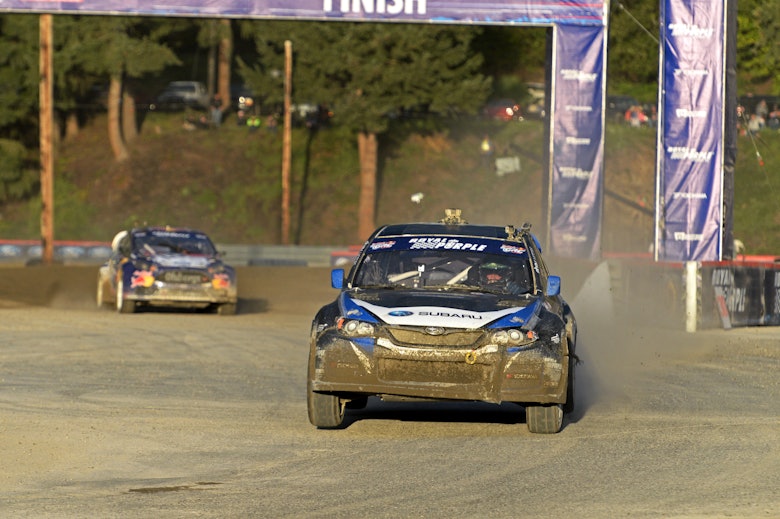
But for 2015, Subaru parked its Impreza hatch, replacing it with the bigger, more current WRX STI. That clean slate gave Subaru a chance to build a monster to rival the European machines that had been brought over from Volkswagen, Olsbergs, and M-Sport that’d go on to be the cream of the crop for the coming years.
“In 2014, it was sort of the end of the stage where we actually had rallycross using rally cars. That’s how I got into this,” Vermont SportsCar founder Lance Smith explains.
“We knew very quickly before ‘14, a number of years before ‘14, that that wasn’t going to work to be competitive.
“We started developing the car. We actually had a car built that was to the FIA standard by a championship winning team just to try to speed up our timeline of learning, and that development of that car, of the car that we were using, ended in 14.”
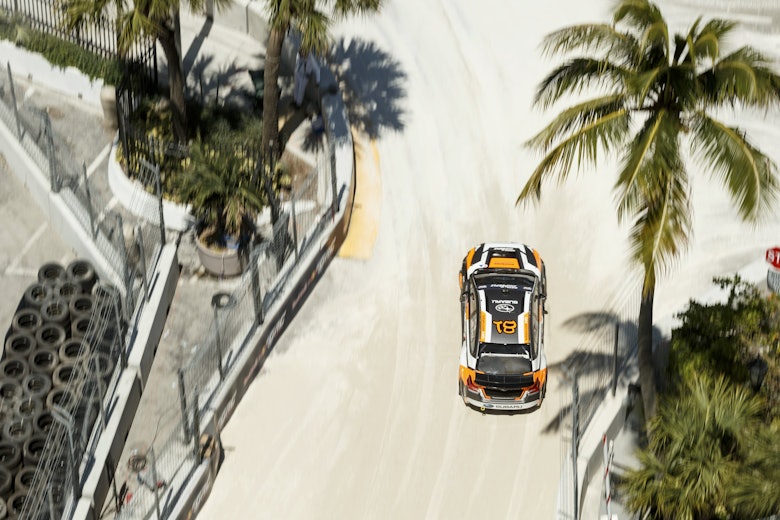
Photo: Larry Chen/Red Bull Content Pool
Apprenticeship served, homework done, Subaru was ready to join the best of the best with the WRX STI in 2015 – as Smith says: “That’s when we started getting serious.”
Subaru upped its involvement too to coincide with the introduction of its headline product, but the combination quickly discovered that the step up would be quite a big one, especially when going up against global automakers much bigger than the modest Japanese brand.
“We started over basically,” Smith said of the development process of the WRX STI. “We found out very quickly that the level of rallycross was lower when it was privateers than it was when the manufacturers started to arrive.
“So when the manufacturers arrived in the US, we made a jump to get competitive with the first level, then we had to make another jump to go against the manufacturers. The manufacturers that we had at the time, both Ford and Volkswagen, were very serious and were working with a much different level of commitment and development and funding than we were at the time.
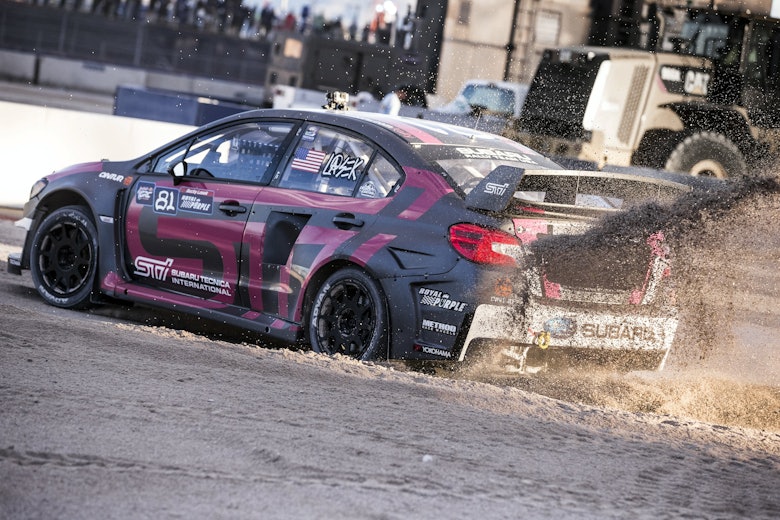
Photo: Chris Tedesco/Red Bull Content Pool
“And I’m not complaining, Subaru took this very seriously, but they’re still a much smaller car company so things are of a different size to what they should help us with.
“So I think that our development, although we were pushing as hard as we could, it was a longer term project.”
That long-term project was very much a constant, living, breathing process. Between its introduction in 2015 and today in 2021, six different iterations of the WRX STI have taken to the track, each being a marked improvement on the last.
“Our development – there was chassis, there was suspension, design of suspension, weight… many things got moved around [and] adjusted,” Smith says. “Probably the biggest area we did development was our engine.”
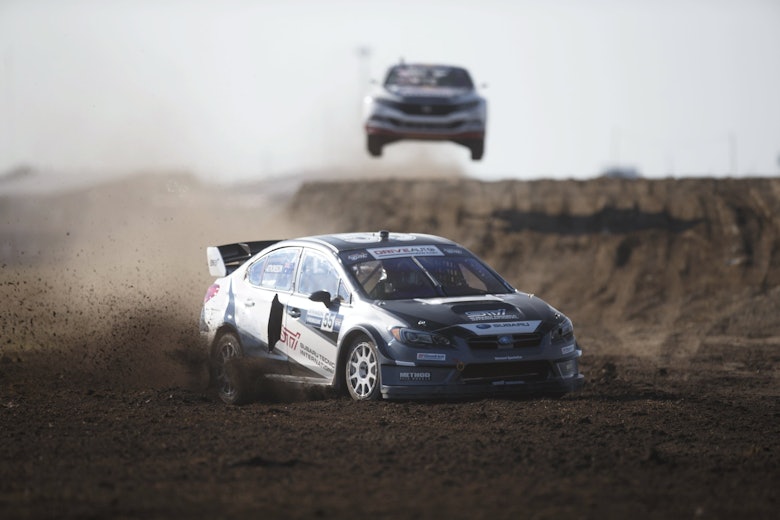
Photo: Larry Chen/Red Bull Content Pool
That engine point, of course, is a big one when we’re talking about Subaru. A Subaru without a boxer is like Thanksgiving without turkey, Christmas without a tree; it just isn’t quite right. But the FIA’s rallycross regulations made using a flat-four tricky at first.
“We were fighting against the custom engine rule that the FIA provided, and the custom engine rule never allowed for a boxer engine to be developed,” Smith explained. “So we originally were working with blocks that were built by the manufacturer.
“There was a group of engines, some were production based engines and some engines were used for the WRC that were still production based, but of a higher quality material. And we finally got it approved where we could actually build our own custom engine, and today that engine is approved by the FIA, but it took years to do that.”
We were running a rally program and a rallycross program with the same people, and it was extremely difficultLance Smith, Vermont SportsCar
While Subaru was refining its car, the driver line-up was also going through a similar evolution. Coinciding with the debut of a fresh iteration of car at the Atlantic City round in 2016, former Subaru World Rally Championship star Chris Atkinson joined the team. The new combination made an instant impact, and by the end of the season two rounds later, Atko had put Subaru on pole.
“What Chris did for us was he added an awful lot of confidence to the team,” Smith says. “And of course he brought confidence from the manufacturer, being a past WRC driver for Subaru.
“We were doing a lot at that time with STI and they knew Chris very well, so that transition to work with them, although it was for basically a single year or 18 months, was really good.
“So he helped bring us to another level for sure, and he taught us something about [how] very small development items add to a big benefit once you add them all up.”
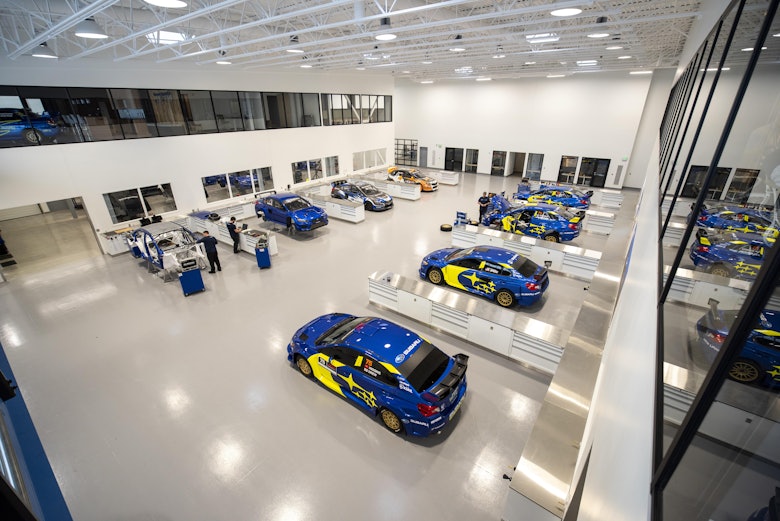
Photo: Ben Haulenbeek/Subaru Motorsports USA
Atkinson’s arrival also came at a time when Vermont SportsCar committed to a vast expansion, one that would see its domineering rally program and emerging rallycross effort given more dedicated resources.
“It was a national level motorsports team. We were running a rally program and a rallycross program with the same people, and it was extremely difficult,” Smith says of his team’s set-up at the time.
“Then we decided we were going to build a building and we were gonna make the next jump, a Vermont SportsCar commitment to make the next jump, to be equivalent with a manufacturer level team. And that’s when we decided to build the building and invest the money and really get to where we could have different departments and the different staff.
“This is only a guess, but I would say that in ‘16, we were probably 35 people and today we’re in the area of 70.”
In 2017 Atkinson was joined by another ex-WRC man in Patrik Sandell, adding yet another string to the team’s bow on track.
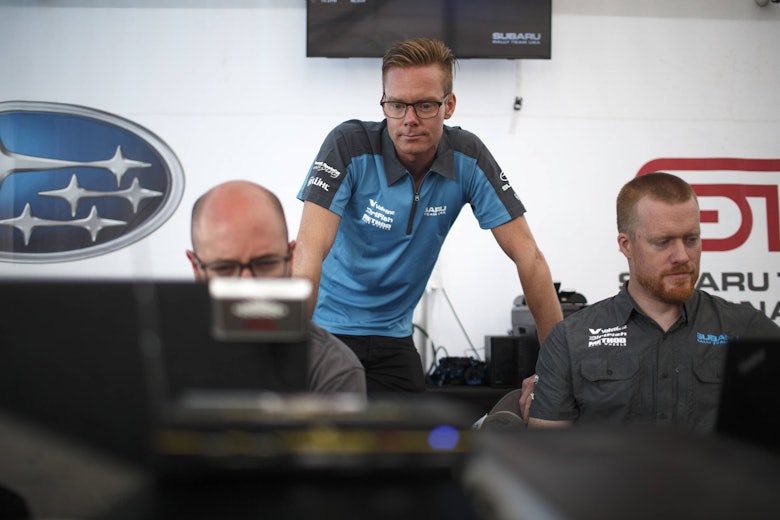
Photo: Larry Chen/Red Bull Content Pool
“They [both] brought different ideas or experiences together and certainly we called on everybody,” Smith explains. “We had many meetings where we all sat together and said, ‘OK guys, which is our biggest gain for the shortest amount of time?’ And we got good feedback, good feedback from the drivers, you know, they were serious test drivers.
“Sverre [Isachsen] was a very good rallycross driver in the day, great feedback too,” Smith stresses, “but when it moved to manufacturer stuff, you also had to have the level of testing knowledge and experience to help raise the team up. You couldn’t just get in there and, you know, chuck it around for the win. That wasn’t gonna happen because everybody was equally fast.”
Subaru was on the up, with WRC knowledge and the experience of multiple GRC wins and title challenges in the case of Sandell, but success still evaded the outfit. That was until 2019 when the team’s results went stratospheric.
After Volkswagen withdrew the majority of its support following the 2018 season, four-time champion Scott Speed was looking for a new home. With Subaru and its bucketload potential (plus factory support), coupled to the fact Speed himself was looking to continue his run of success, it looked to be an ideal marriage – even if at the time it raised a few eyebrows.
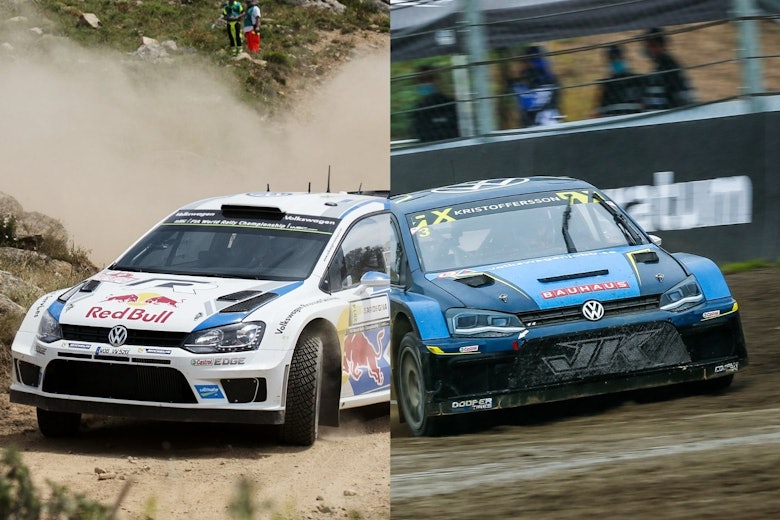
Speed’s arrival coincided with Subaru’s success, but it wasn’t so much an overnight leap brought about by the driver rather perfect timing as all of the previous years’ work had come together. A consequence of the pieces of the puzzle coming together was the team unlocked even more ways it could improve that it hadn’t previously not enjoyed.
“Two things happened at the same time,” Smith says. “So the development of our engine – it was engine and gearbox – it was getting to the place where we had reliability and strength. And performance.
“When Scott arrived, the engine package was coming together fairly well and we could finally work on the car during the event instead of just trying to do, not maintenance, but just triage to keep the thing running. And we had a very desperate time back then with engines.
“So when he arrived, the engine package was settled down and we had performance and with his help, we could work on finetuning the car. So in the service time or the time leading to the event after qualifying, we could just work on making the car better and not just trying to make it run, continue to run and get through the event.
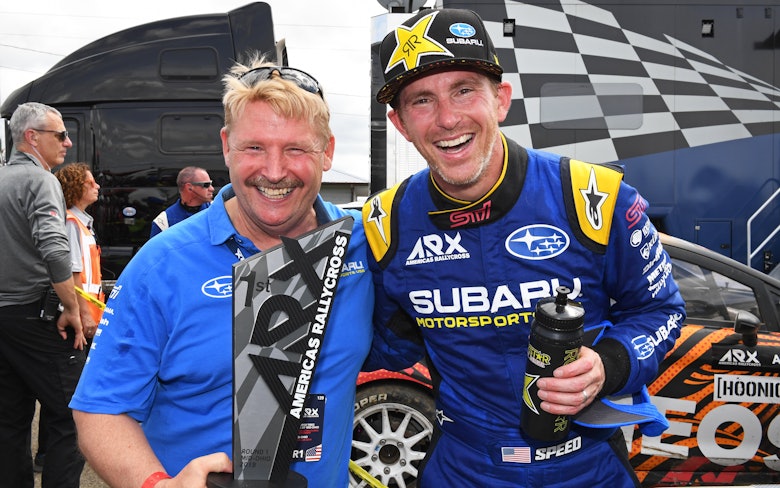
Photo: Lars Gange/Subaru Motorsports USA
“We were given lots of time at the event to just fine tune the set-up and all the little things in the car to make it competitive that day on that track. And we didn’t really have that before, because there were so many other things we had to attend to.”
Speed got off to the perfect start at Subaru, winning his first race for the team at Mid-Ohio, but he was part of an all-star three man line-up alongside Atkinson and Sandell; and all three played their parts perfectly, as did the non-driving staff on the team.
“Maybe Scott, when he arrived, was the winningest driver going, but we had three very capable drivers. They proved that,” Smith insists. “And everybody added to the progress we made and the development and the performance.
“They all contributed, including the technicians and engineers and all that. Scott helped us with this. We were finally able to slow down and go after the little pieces instead of the big jobs of trying to keep it together. So that was very good.”
To me, that was a highlight for us as a business. It was awesome. It was at the same time, so there's nobody that can dispute itLance Smith, Vermont SportsCar
Subaru, a fan favorite team not just in the US but in Europe too where the loyal WRC following from years past had turned an eye to rallycross, was finally at the peak of its powers. And if four wins from seven starts across Americas Rallycross and Nitro Rallycross in 2019 wasn’t enough, when the US field and World Rallycross shared the bill at Trois-Rivières, it was Subaru that topped the timesheets.
“Yeah, that was amazing to me. And that’s not something the public celebrates, but internally in the team, that was a massive achievement for us,” Smith recalls fondly. “And we just walked around, shaking our heads, saying ‘we did it’.
“OK, we were the fastest that day at that moment. That doesn’t mean we’re the fastest all weekend. But at one point in our time, we were the quickest and that was the achievement to say ‘wow, we’re within reach here and at least we can go to an event and hold our heads up and fight as hard as they can’.
“That was so much fun, [it was] crazy. And that was like a home to us. You know, it was two hours from our workshop, and a lot of Canadian fans up there know who we are because we rallied up there for years. So there was a lot of fans in the area coming by and just smiling and patting us on the back.
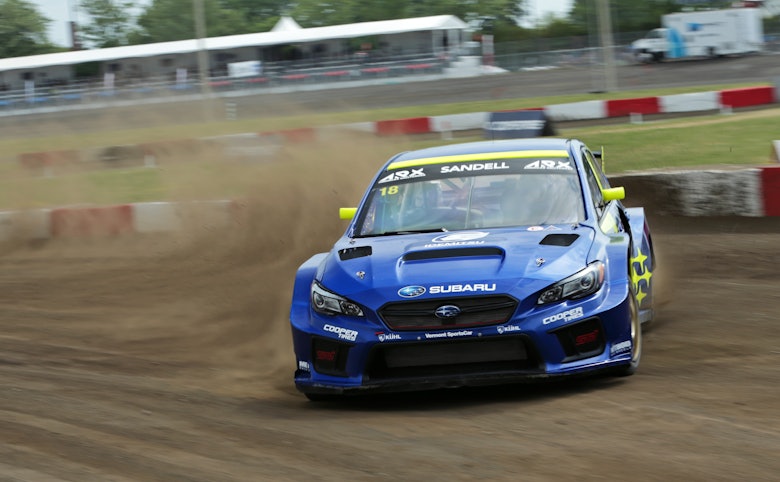
Photo: Matt Stryker/Subaru Motorsports USA
“To me, that was a highlight for us as a business. It was awesome,” he adds. “We had the quickest qualifying time and it’s not like they ran 15 minutes later or an hour later, and the [air] temperature and track temperature changed. It was at the same time, so there’s nobody that can dispute it.”
The 2019 season – Subaru’s most recent in rallycross as a result of the transition from ARX to NRX and the COVID-19-influenced layoff – vindicated the team. After years of hard work, Subaru’s commitment to rallycross in the US was rewarded.
“We are a major chunk of Subaru’s marketing, we’re very thankful to have their faith in us and their belief in rallycross, but we know as a manufacturer it’s not easy for these guys,” Smith says. “And, thankfully over the years we have shown some places where we’ve been able to prove the return on investment and their belief in us.
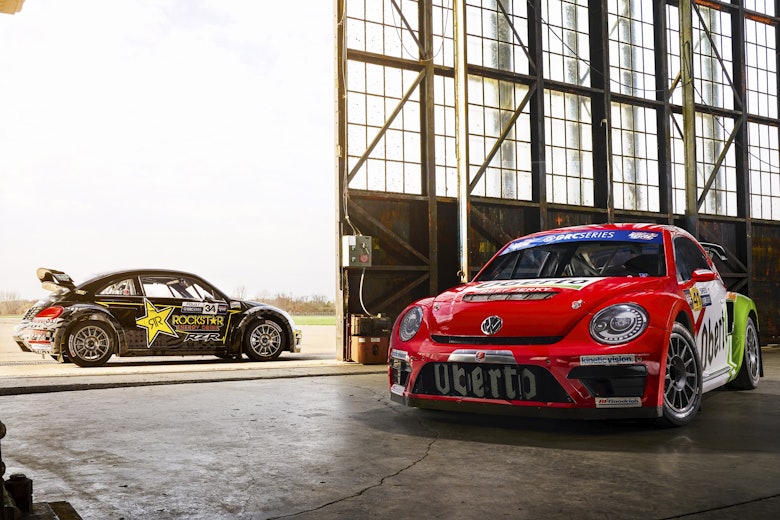
“The two things that stick in my mind are the result in qualifying in Canada, and then last year, or the year before when we actually raced, winning more events than anybody else.
“That was really good for us. Every one of our drivers won. That proved it’s not a single driver, it’s also the car and we’re on equal footing.
“And those are major milestones for me that I could walk away saying, ‘yeah, we did it. At least we were there’. Now we need to flat out win ‘em all!”





